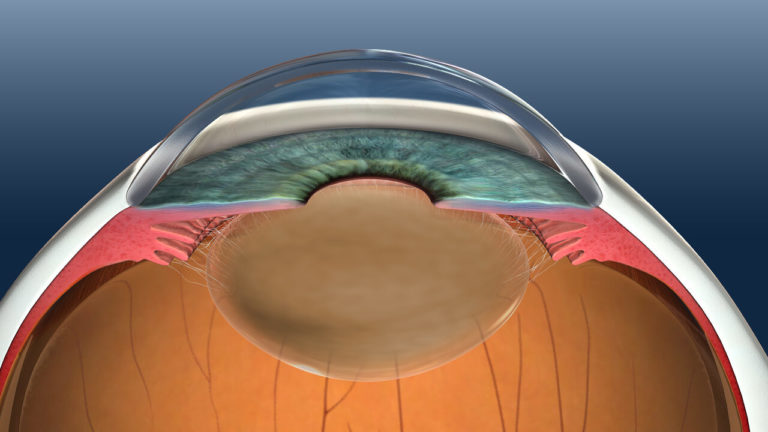If you are one of the millions of people who suffer from cataracts, you may be interested in learning more about the different types of cataract lenses that are available. In this blog post, we will discuss the different types of cataract lenses and how they can help improve your vision. We will also provide information on where you can go to get a cataract lens exam. So, if you are ready to learn more about cataract lenses, keep reading!
Contents
What Are Cataract Lens?
 Cataract lenses are a type of intraocular lens (IOL) that is implanted into the eye during cataract surgery. They provide vision correction by allowing light rays to focus properly on the retina and provide clear, crisp images. Cataract lenses can be made from different materials such as acrylic, silicone, or foldable hydrophobic acrylic.
Cataract lenses are a type of intraocular lens (IOL) that is implanted into the eye during cataract surgery. They provide vision correction by allowing light rays to focus properly on the retina and provide clear, crisp images. Cataract lenses can be made from different materials such as acrylic, silicone, or foldable hydrophobic acrylic.
There are different types of cataract lenses available to treat different types of vision problems. Let us discuss the various types of cataract lenses and how they can be used to improve your vision.
Monofocal Lens
This type of lens provides clear focus at one distance. It is the most common type of cataract lens and is ideal for those with mild to moderate nearsightedness, farsightedness, or astigmatism. This type of lens is not ideal for patients with presbyopia, or age-related nearsightedness. The cost of monofocal lens can range from INR 35,000 – 60,000 per eye.
Multifocal Lens
This type of lens provides a range of vision and can be used to correct both near and far vision simultaneously. It is ideal for those with presbyopia who need help seeing objects at all distances. The lenses contain special optical zones that focus light rays onto the retina at different distances, allowing the eye to switch from near to far vision with ease. The cost range of multifocal lens can be from INR 55,000 – 1,00,000 per eye.
Accommodative Lens
This type of lens is similar to a multifocal lens in that it provides a range of vision for both near and far objects. However, this type of lens contains flexible optics, allowing the eye to focus on objects at close and far distances without needing to switch between two different optical zones. It is ideal for those with presbyopia who want clear vision without having to switch lenses or glasses. The cost range of an accommodative lens can be from INR 70,000 – 1,20,000 per eye.
Whether you choose a monofocal lens, a multifocal lens or an accommodative lens, it is important to consult your eye doctor before deciding which type of cataract lens is best suited for you. With the help of the right cataract lens, you can enjoy clear and comfortable vision.
How Do They Work?
Cataract lenses work by replacing the eye’s natural lens, which has become cloudy due to cataracts. The new lens is usually made of a clear plastic material and helps improve vision by allowing more light into the eye. It also corrects any refractive errors that may have been present before the cataract developed. The new lens is typically held in place by a surgically-placed support structure, such as a tiny plastic ring or haptic.
How Are Cataract Lenses Implanted?

Cataract lenses are typically implanted during a surgical procedure known as phacoemulsification. During the operation, the surgeon will make an incision in the cornea to access the lens and then use ultrasound waves to break up and remove the cloudy cataract tissue. The new lens is then inserted into place, allowing light to pass through it and into the eye.
Cataract lenses can be monofocal or multifocal, depending on the patient’s visual needs. Monofocal lenses are designed to provide clear vision at one distance only (typically far away). Multifocal lenses allow for clear vision at multiple distances and may also reduce the need for glasses.
After the surgery, it is important for patients to follow their eye doctor’s instructions and attend any recommended post-operative appointments. Doing so can help ensure that their vision remains clear and comfortable over time.
What Are The Advantages Of Cataract Lenses?
 Cataract lenses have many advantages. Let us look at some of them.
Cataract lenses have many advantages. Let us look at some of them.
- Improved Vision: Cataract lenses are designed to improve vision and provide clear, crisp images. They also reduce the need for glasses or contacts after cataract surgery.
- Reduced Glare: Cataract lenses reduce the glare from bright lights and help enhance night vision.
- Improved Contrast Sensitivity: These lenses improve contrast sensitivity, which means that they can help improve your ability to distinguish between objects with subtle differences in colour or light intensity.
- Enhanced Depth Perception: The lenses also allow for improved depth perception, which can help with activities such as driving.
- Lifelong Benefits: Cataract lenses provide a lifetime of vision benefits, even after cataract surgery.
The benefits of cataract lenses make them a great option for those looking to improve their vision after cataract surgery. However, it is important to discuss all of your options with your eye doctor before deciding which type of lens is best suited for you.
What Are The Limitations Of Cataract Lenses?
Cataract lenses can provide exceptional vision, but they do have some limitations. Some of the most common are:
- They cannot correct for presbyopia, or age-related nearsightedness.
- Due to the shape and size of cataract lenses, they may not fit comfortably in some frames.
- They may not be able to effectively correct astigmatism, depending on the type of lens used.
- If your cornea is too thin or if you have an unusually shaped iris, you may not be a suitable candidate for cataract lenses.
- Some cataract lenses can cause glare and halos around lights, reducing night vision.
- Cataract lenses can be costly, depending on the type of lens chosen.
- They may require more frequent adjustments than regular eyeglasses.
It’s important to speak with an optometrist or ophthalmologist before deciding if cataract lenses are the right choice for you. They will be able to assess your needs and determine if cataract lenses can provide the vision correction you need.
If you decide that cataract lenses are the best choice for you, make sure to follow all safety instructions provided by your doctor. Taking care of your new lenses is essential for maintaining clear vision.
Conclusion
In conclusion, cataract lens technology is an amazing development that can improve vision and quality of life for those experiencing cataracts. Whether you need a monofocal, multifocal, or extended depth of focus lens, your eye doctor can help you choose the best option for your individual needs. With careful consideration of lifestyle choices and budget options, you can find the right lens to give you a clear, comfortable vision. Be sure to consult your eye doctor before making a final decision to ensure that it is the right choice for your unique needs. The doctors and staff at MantraCare would be happy to help you navigate the cataract lens decision process.
Cataract surgery is a safe and painless procedure. At MantraCare we have a team of experienced eye surgeons, who will be happy to answer your any questions on cataract surgery. Call us at +91-9711116605 for any inquiries.
